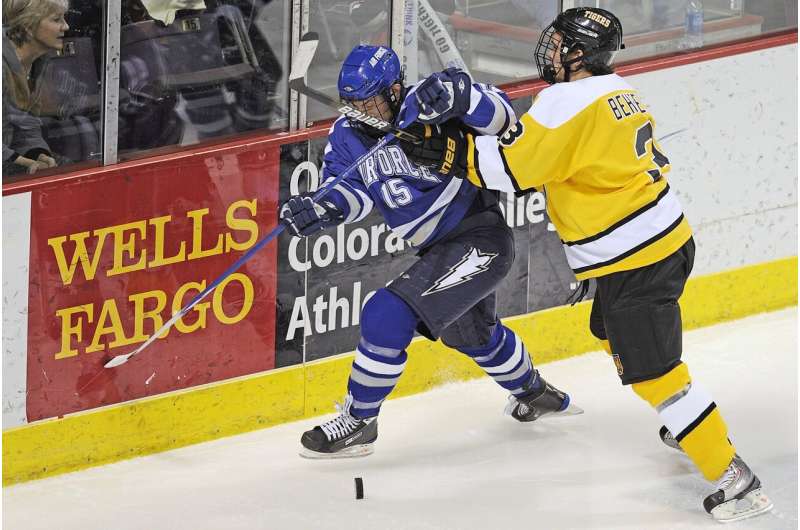Maple Leafs' Goalkeeper Anthony Stolarz's Injury Sparks Concerns Over Concussions in Ice Hockey

The injury of Maple Leafs' goalie Anthony Stolarz during the playoffs highlights ongoing concerns about concussion risks and brain injuries in ice hockey, emphasizing the need for improved prevention and management strategies.
During Game 1 of the Maple Leafs' playoff series against the Florida Panthers, goaltender Anthony Stolarz was hit in the head by Panthers forward Sam Bennett. Although he initially stayed in the game, he eventually skated to the bench, vomited, and was stretchered off the ice to a hospital. Stolarz returned to his team the next day but will not participate in the following game, and his full recovery timeline remains uncertain. While a formal concussion diagnosis has not been confirmed, the incident has reignited debates about head injuries in hockey.
This event emphasizes the persistent risks of concussions and traumatic brain injuries (TBIs) in contact sports. Such injuries, caused by impacts affecting the head, can have acute and long-lasting health effects. Statistics show that millions of sports-related TBIs, including concussions, occur annually, with ice hockey presenting a notably high risk. In Canada, approximately 22% of young players experience at least one concussion, with some studies reporting up to 24.3 injuries per 1,000 game hours. Professional hockey also reports significant concussion rates, averaging about 5.8 per 100 players each season.
From a biomechanical perspective, concussions occur when external forces cause the brain to move within the skull, either through linear impact or rotational motion. These impacts generate forces that can deform brain tissue, affecting different regions and resulting in symptoms such as headaches, dizziness, nausea, confusion, memory issues, and sometimes loss of consciousness. Symptoms may appear immediately or develop hours or days after impact, with most cases recovering within a week. However, some concussions lead to extended health issues, including long-term memory problems and depression.
Diagnosing concussions remains challenging because they are not visible on standard imaging tools like CT scans. Instead, assessment relies on evaluating symptoms and implementing protocols like those in the NHL, which require players to be removed from play for evaluation. Clinical tools such as the Glasgow Coma Scale help determine severity, with mild TBIs characterized by a GCS score of 13-15. Proper management includes stopping activity and seeking medical care for appropriate treatment and recovery.
Prevention strategies are critical and include policy reforms, stricter enforcement of rules, better education, and the use of protective equipment. Modern hockey helmets reduce head acceleration and brain strain during impacts, and continuous advancements in helmet technology are vital for injury prevention. Researchers are also developing biomechanical injury metrics based on head kinematics and brain tissue deformation simulations, which can help predict injury risk more accurately. Addressing these issues requires interdisciplinary research efforts to improve safety in ice hockey and ensure player well-being.
Source: https://medicalxpress.com/news/2025-05-maple-leafs-goalie-anthony-stolarz.html
Stay Updated with Mia's Feed
Get the latest health & wellness insights delivered straight to your inbox.
Related Articles
Cows-Derived Bacteria Show Potential in Fighting MRSA Infections
Researchers discover bacteria from cows that produce signaling molecules capable of disrupting MRSA infections, offering a new approach to combat antibiotic resistance.
Understanding Heat Acclimation: How to Stay Cool and Resilient in Extreme Temperatures
Discover how heat acclimation and simple strategies can help individuals adapt to rising temperatures, protect health, and build resilience against extreme heat conditions.
Local Community-Led Approaches Enhance Health Support for Rural Australian Children
Community-driven, place-based health strategies are transforming access to vital services for children in Australia's rural areas, ensuring better developmental outcomes through local partnerships and tailored solutions.
Reducing US Foreign Aid Could Lead to Millions of Additional Tuberculosis Cases and Fatalities
Cutbacks in U.S. foreign aid could lead to over 10 million new tuberculosis cases and 2.5 million deaths globally by 2030, threatening decades of progress in TB control.



